Read our blog post on B2B eCommerce and check how Kooomo can help you with your eCommerce strategy
>Share this post<

by Lauren Cassidy
February 21, 2020
We believe that businesses shouldn’t have to license multiple technologies in order to manage a single sale. Utilising the Kooomo platform, retailers can manage all sales channels (online store, B2B, marketplaces, and in-store) through a proven and affordable digital commerce cloud solution.
There are three main aspects that we have leveraged in order to help merchants: Next-generation technology, a growing network of partnerships and proven expertise. Our intuitive omnichannel platform allows them to incorporate chatbots, data analysis and reporting, warehouse management, AOM and DOM software, all in one place.
eCommerce is a constantly evolving market segment and we want to make that accessible, understandable and affordable for both B2C and B2B customers.
There are three main aspects that we have leveraged in order to help merchants: Next-generation technology, a growing network of partnerships and proven expertise. Our intuitive omnichannel platform allows them to incorporate chatbots, data analysis and reporting, warehouse management, AOM and DOM software, all in one place.
eCommerce is a constantly evolving market segment and we want to make that accessible, understandable and affordable for both B2C and B2B customers.
How Kooomo Technology works
Kooomo is an international eCommerce platform that handles the whole complexity of localising websites for our international clientele. This means we can operate in a multitude of languages, currencies, VAT rates and work with a variety of companies and warehouses on behalf of our customer.
We can issue our sitemaps or SEO subfolders in language or in-country. Then, based on the available language, content and pricing that pertains to each country, we can deliver each page and it’s contents to the end-user (merchants customer) on the front end of the website. Therefore, each customer journey is customised and their purchases are catered to based on the market to which the retailer is delivering – i.e. the shipping address.
You get all local prices, local taxing and this benefits the merchant as they can fluctuate their pricing based on a particular country or market. They can then apply local VAT and/or import duties if needs be with the full price including all excess like taxes and delivery charges shown to the customer on the front end.
As well as eCommerce, or www. websites, Kooomo also handles other sales channels – local sales channels, in-store digital ordering systems and native apps (which we can plug into through our API in order to receive orders and control the web store).
For every project, we are somewhat integrated with external business systems that the merchant would operate on or house within their own offices. They would typically include warehouse management systems, ERP’s finance systems, PIMS and CRM tools.
Features & Functionality of the platform
Our biggest USP is that we are international – We adapt to each country’s diverse requirements from languages to tax rates and ensure smooth company and warehouse operations. We also pride ourselves on offering full omnichannel solutions. Our distributed order management (DOM) allows us to fulfil orders from multiple fulfilment sites like in-store or from multiple warehouses.
This means that the availability of your products across all of your physical outlets is available online and the customer experiences a single unified basket. Once the order has been placed we would then split the order to an end fulfilment centre or ship separately to the customer. Equally, we would have similar workflows for product returns and exchanges.
We also have an impressive courier management system integrated with nearly 20 of the most popular couriers in Europe. They’re fully integrated so you have the ability to request shipments, apply labels and conduct tracking. You can then supply an end-to-end seamless communication to your customer about every single order that the customer has placed.
But how does this work for B2B companies?
The B2B module works within the same theme – your B2B module will appear based on the customer’s user typology. All customers in your B2C site will go into a default customer group. Once your B2B customers have been passed through your approval stages into the B2B group, they will receive a whole different experience when they log in.
This includes a whole new set of eShops files, which will load on the front end to give your B2B customer a completely different experience in terms of payments, communications, promotions and orders.
Alternative payment methods can be integrated such as bank transfers and credit – as well as the ability to request a quote. A customer can request a quote instead of paying upfront and also allows merchants to negotiate prices with your customers. The retailer or a member of the eCommerce staff can then revise the order and manipulate the pricing based on the agreement that is made with the customer.
Our promotions work based on customer clusters too – so you can run special promotions for B2B customers. For example, if there’s a group that gets a percentage off the full price, you can manage those promotions and drive them to groups of customers instead of individual customers. The B2B functionality in the back end of the website also allows your eCommerce staff to create orders on behalf of customers via the back end admin panel.
Our approach to ERP integration
Enterprise Resource Planning (ERP) is a real-time software that businesses use to collect, store, analyse and interpret data from a number of business activities. Our ERP process management software ensures that your business is running in a profitable manner and that you are dedicating enough resources for the following season, or following year depending on the merchant. We’re approximately 20 years integrating ERP and other business systems so there is very little retail business functionality that we have not integrated over the years.
Integrations to external systems are developed in-house by Kooomo’s IT team. Integrations are developed to a high standard and are deployed rapidly – with integrations already in place with SAP, Microsoft Dynamics and many other business systems. Once we integrate one, we typically take those endpoints and apply them to other projects as well – so the integrations happen fast and are quite replicable.
A typical project will have a PIM integration including a multi-price list, it will include promotions and a CRM integration (to connect the customer service with the tickets that are coming through the site as well as connecting the customer service to the warehouse management system).
For almost 100% of our projects, we would integrate a warehouse managing system. We can integrate an external OMS if the retailer prefers to use a central OMS for all eCommerce orders and other digital sales channels. We can take all-digital, web-based or app-based orders and push them to an external OMS that sits on the retailers’ side.
Our development process can adapt for change of mind and added requirements within the development process. In terms of B2B, there are additional integrations we can make including loyalty systems, user-groups, particular promotions for each company or group based promotions, company profiles and the credit stream for companies.
Continuous Integration and Continuous Delivery (CI/CD) processes guarantee rapid development with high quality and high productivity.
To Summarise…
B2B companies can create a user experience that caters directly to B2B needs in terms of payments, communications and promotions. The platform is flexible enough to tend to corporate payment methods such as credit and bank transfers and offer a means for price negotiations depending on the order. We offer the ability to run specialised B2B promotions driven to specific customer groups and a back end that allows your eCommerce staff to create orders on behalf of your customers.
Ultimately, Kooomo’s platform brings together every piece of the digital commerce puzzle. With a flexible revenue-share model, we’re all driven to succeed. Our extensive partner ecosystem, with world-class technologies, ensures businesses are future-proofed to keep up with the evolving digital landscape.
With a consultation from a Kooomo representative, we will run a review of your current website and discuss the USP’s that the platform has to offer B2B companies. Simply get in touch with us at www.kooomo.com.
More to explore
Here’s an overview of the latest improvements that are now available in the Kooomo platform.
In the next few years, we are foreseeing an impressive increase for the global retail industry. While this can be beneficial for the global eCommerce industry, it also means that there will be more competition, as well.

 en
en 

